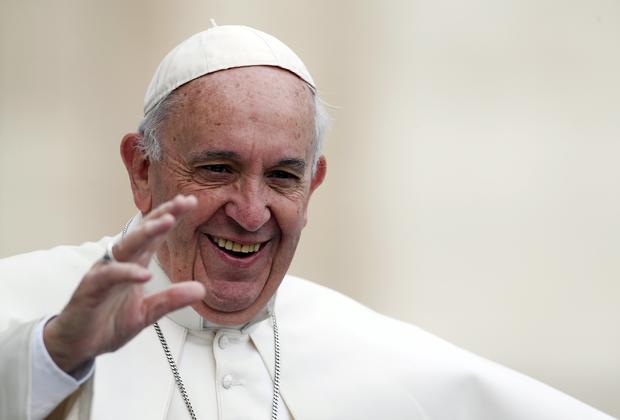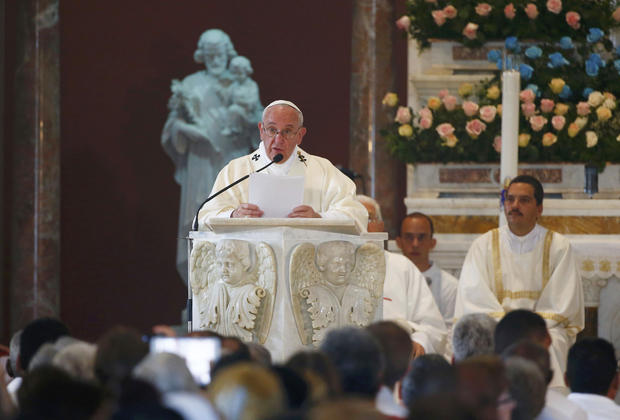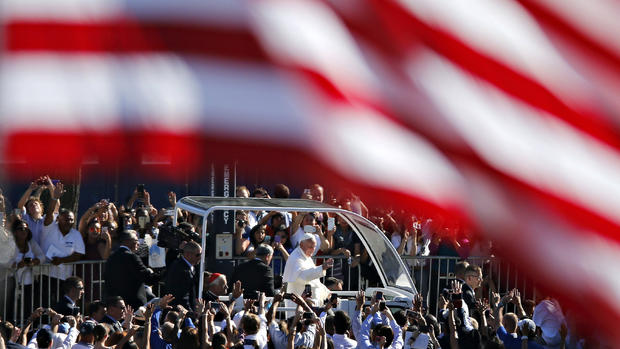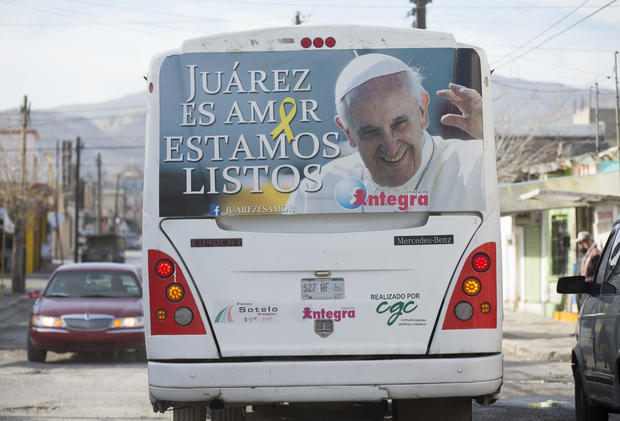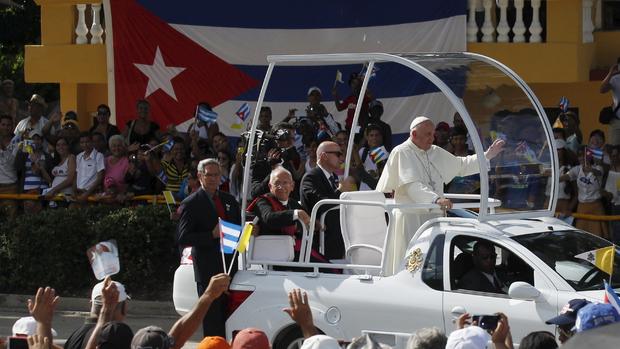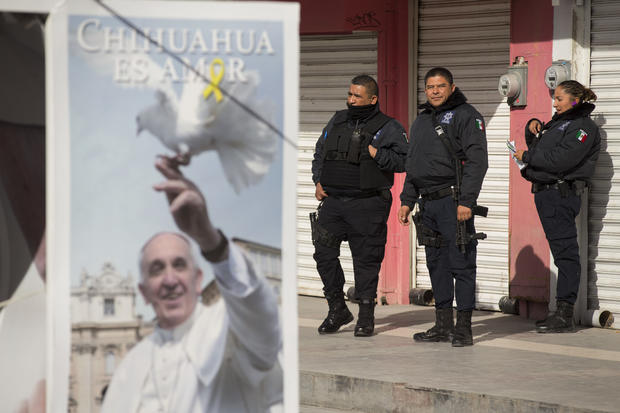5 things to know about Pope Francis' trip to Mexico
History's first Latin American pope travels to Mexico on Friday for a weeklong tour of some of the most violent, poverty-stricken and peripheral places in the Americas.
He'll be bringing a message of hope and solidarity to victims of drug violence, trafficking and discrimination -- a message the Vatican hopes will also resonate north of the border.
Nearly four decades after St. John Paul II began his globe-trotting papacy in Mexico, Francis too will begin his trip by praying before the Virgin of Guadalupe shrine. But after that, he will be entering into uncharted papal territory.
Click ahead to see the five things to know about Francis' trip to the largest Spanish-speaking Catholic country in the world.
Orthodox Pit Stop
Francis is known for his spontaneity, but even by Franciscan standards, the bombshell dropped last week was big.
For the first time ever, a pope and a patriarch of the Russian Orthodox Church will meet Friday in Cuba, in a stopover en route to Mexico. The Vatican sees the meeting as a historic step in the path toward healing the 1,000-year schism that split Christianity.
Popes as far back as Paul VI have met with the Istanbul-based Ecumenical Patriarch, "first among equals" in the 250 million-strong Orthodox Church. But the Russian Church - the biggest and most powerful in Orthodoxy -- has always kept its distance from Rome.
The common concern over the plight of Christians in Syria and Iraq has brought the two churches together, but that's not the only reason Patriarch Kirill has finally agreed to a meeting.
In June, leaders of the 14 Orthodox churches meet in Greece for the first pan-Orthodox synod in centuries. Observers say Kirill's opening is more about grandstanding within Orthodox circles than any new ecumenical initiative.
"Mexicanization"
Francis made the first major diplomatic faux pas of his papacy when, in a private email to a friend last year, he warned that Argentina's increasing drug problem risked turning it into a trafficking haven like Mexico, where cartels have terrorized the population and infiltrated police and other public institutions.
The "Mexicanization" comment understandably irked Mexico, and the Vatican promptly apologized. But it underscored Francis' tough line on drug trafficking and corruption, which he has called a sin incompatible with Christianity.
Francis is expected to address both blights during his Feb. 12-18 visit, though he has said he's not bringing policy solutions to fix Mexico's ills. But relatives of some of the 43 students who disappeared in 2014 in suspicious circumstances have been invited to Francis' final Mass in Ciudad Juarez, once considered the murder capital of the world.
"It's the fundamental place of passage for this network of drug trafficking, where the links are inseparable between the narcotraffickers and Mexican law enforcement," Guzman Carriquiry Lecour, a close papal adviser, told a recent seminar. "This is the Mexican periphery and the pope wants to go."
Church-State Relations
Francis has previously urged his bishops not to shy away from denouncing corruption and organized crime, and he may well do the same in Mexico.
"Above all, we have to raise our voices to condemn the corruption and links that exist between certain power structures and the drug cartels and narcotraffickers that allow them to move freely with impunity," the Vatican secretary of state, Cardinal Pietro Parolin, told the Italian weekly Famiglia Cristiana recently.
It was perhaps a diplomatic way of addressing a Mexican church that even Mexican prelates say shows too much deference to the country's wealthy and powerful.
Francis, however, has signaled his priorities: Last year he made a cardinal out of the bishop of Morelia, Mexico, and will honor his ministry to victims of drug violence by visiting his diocese.
An Indian Church
When churchmen have stood by Mexico's oppressed, they have often got in trouble. The late Bishop Samuel Ruiz, known as the "bishop of the poor" for his ministry to the impoverished Indians of southern Chiapas, ran afoul of the Mexican government and, at times, the Vatican.
His crime? Defending Indian rights, embracing the pre-Hispanic customs of the Mayan Indians in liturgies and training married deacons to minister to Indians who had more esteem for married lay workers than celibate priests.
In 1993, the Vatican ambassador to Mexico asked Ruiz to resign, but backed down after Indians rallied to his defense. After Ruiz retired in 1999, the Vatican suspended the ordination of deacons on the grounds that it was dissuading men from entering the priesthood. The Vatican under Francis lifted the ban in 2014.
Francis, who issued a sweeping apology for Catholic crimes against indigenous peoples in a visit to South America last year, will celebrate a very Indian Mass in Chiapas on Monday and present a decree authorizing the use of indigenous languages in liturgy.
But in an indication that Ruiz remains a controversial figure, the Vatican won't confirm whether Francis will pray at Ruiz's tomb in the cathedral of San Cristobal de las Casas.
Cross-Border Prayer
The highlight of the trip comes on the final day, when Francis travels to Ciudad Juarez and prays at Mexico's northern border for all who have died trying to cross. A group of migrants in El Paso, Texas, will join him in prayer across the frontier, and then watch Francis' subsequent Mass in Juarez in an El Paso stadium.
Francis has demanded that countries welcome migrants and refugees fleeing poverty and oppression, calling for bold new solutions and denouncing the "globalization of indifference" that the world shows migrants.
His appeal comes amid a U.S. presidential campaign where immigration is a hot-button issue, with Republican contenders Donald Trump and Ted Cruz vowing to expel Mexicans and build a better border wall.
Will Francis' message get any airtime north of the border?
"I'm not sure people are paying attention to it," said Neomi De Anda, assistant professor of religious studies at the University of Dayton who grew up in El Paso. "I'm not sure our political candidates are all that interested."
